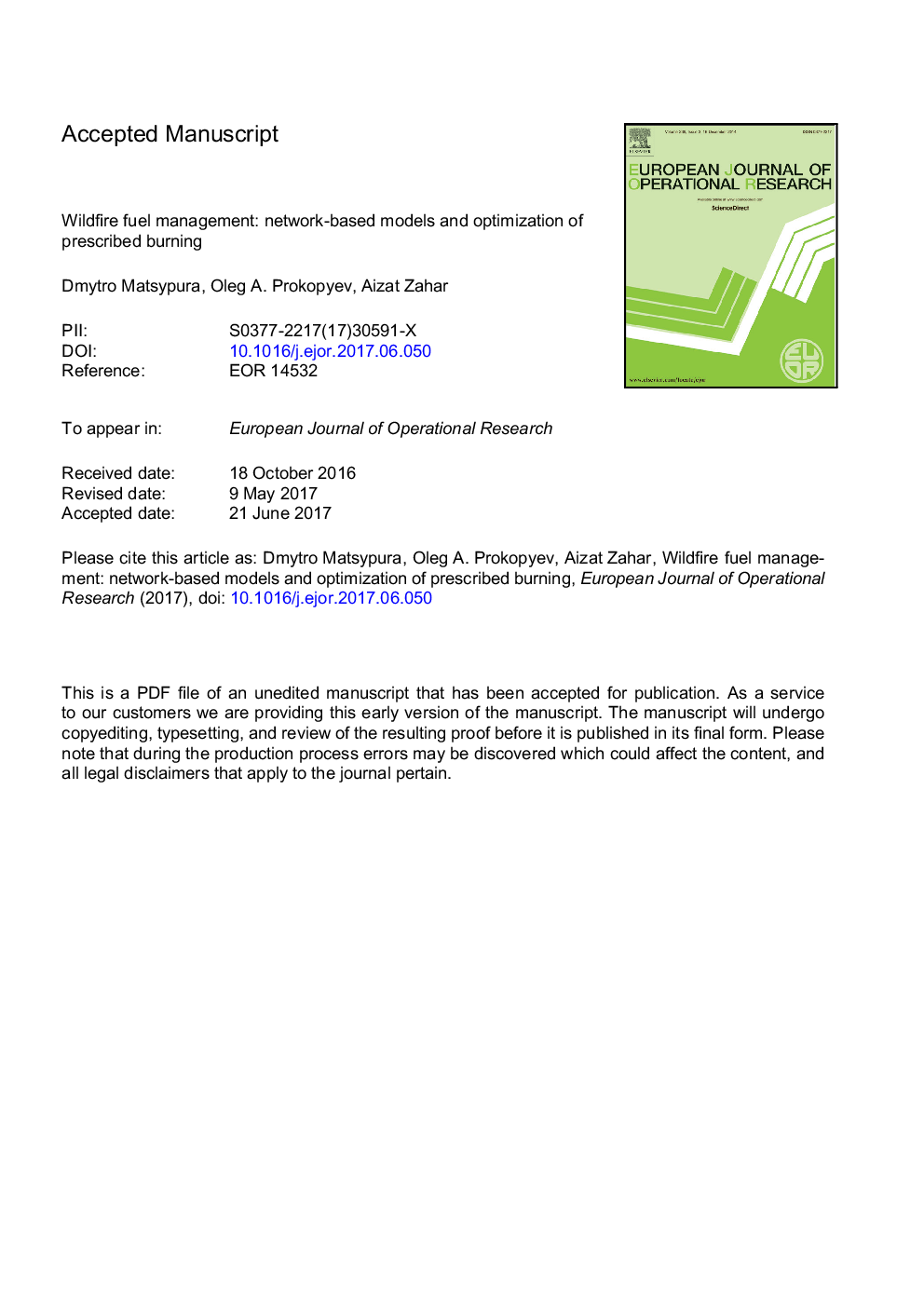| Article ID | Journal | Published Year | Pages | File Type |
|---|---|---|---|---|
| 4959432 | European Journal of Operational Research | 2018 | 37 Pages |
Abstract
Wildfires are a common phenomenon on most continents. They have occurred for an estimated 60 million years and are part of a regular climatic cycle. Nevertheless, wildfires represent a real and continuing problem that can have a major impact on people, wildlife and the environment. The intensity and severity of wildfires can be reduced through fuel management activities. The most common and effective fuel management activity is prescribed burning. We propose a multi-period optimization framework based on mixed integer programming (MIP) techniques to determine the optimal spatial allocation of prescribed burning activities over a finite planning horizon. In contrast to the existing fuel management optimization literature, we model fuel accumulation with Olson's equation. To capture potential fire spread along with irregular landscape connectivity considerations, we use a graph-theoretical approach that allows us to exploit graph connectivity measures (e.g., the number of connected components) as optimization objectives. The resulting mathematical programs can be tackled by general purpose MIP solvers, while for handling larger instances we propose a simple heuristic. Our computational experiments with test instances constructed based on real-life data reveal interesting insights and demonstrate the advantages and limitations of the proposed approaches.
Related Topics
Physical Sciences and Engineering
Computer Science
Computer Science (General)
Authors
Dmytro Matsypura, Oleg A. Prokopyev, Aizat Zahar,
